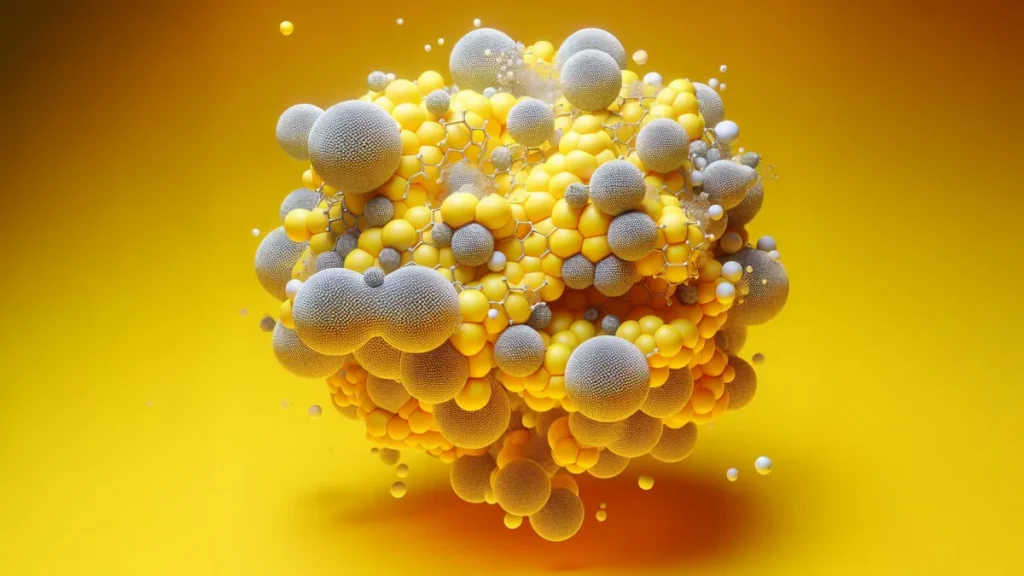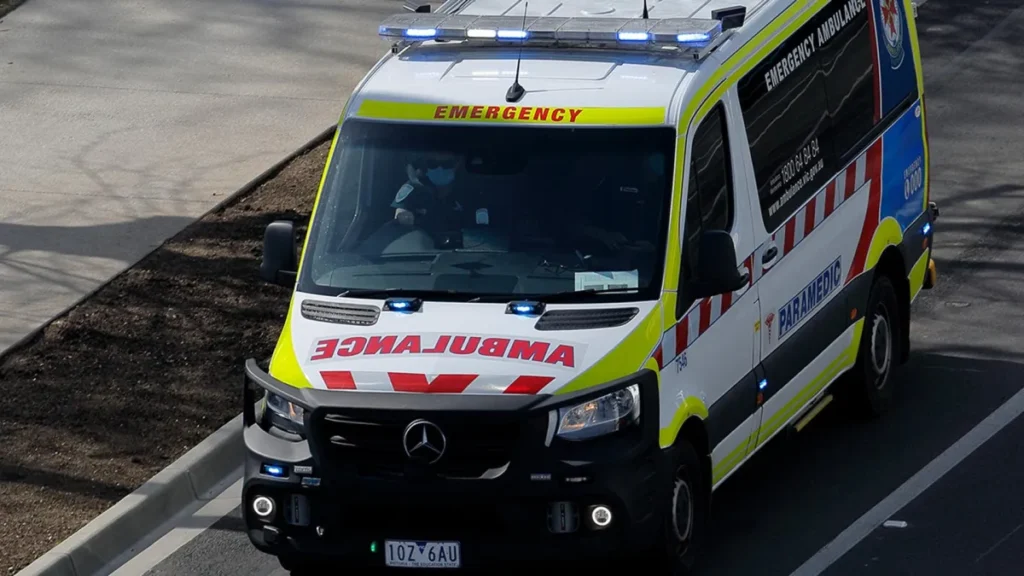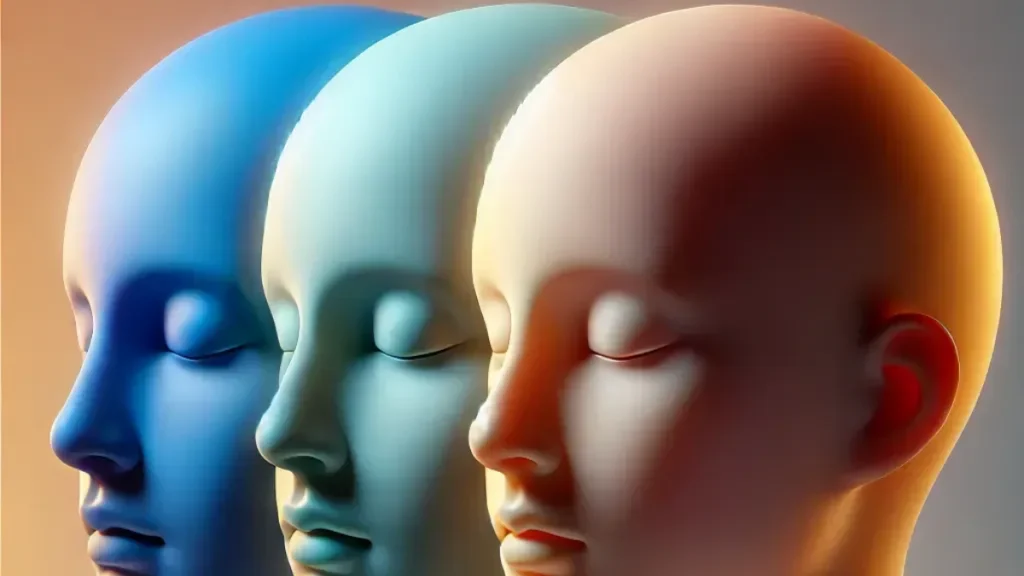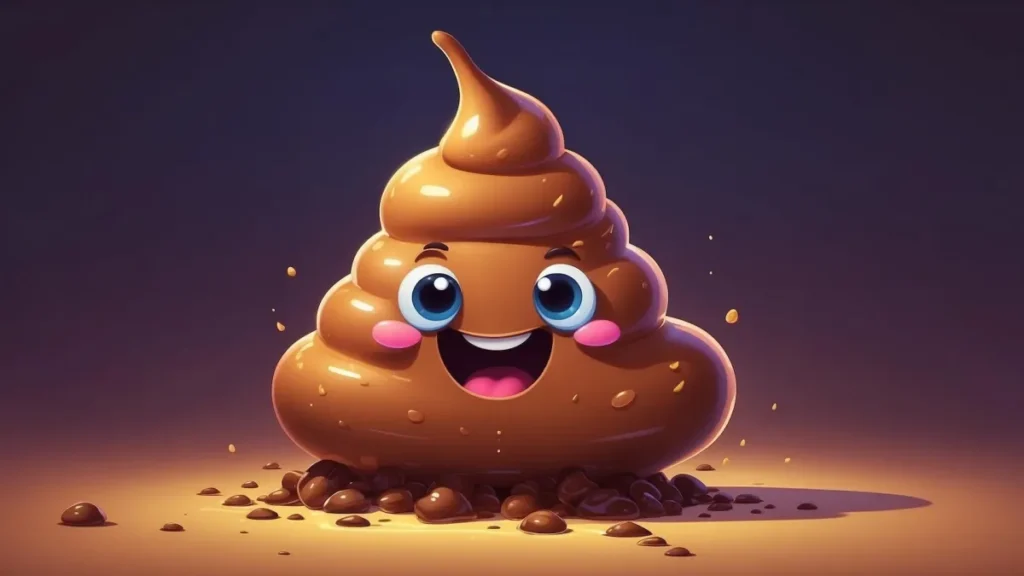Say Goodbye to Heartburn
Acid Reflux Relief: Conquer Heartburn and GERD Naturally
Over 60 million Americans experience acid reflux at least once a month, making it one of the most prevalent digestive disorders in the United States. When left untreated, chronic acid reflux can develop into serious complications, including oesophageal damage and increased cancer risk. While conventional medications offer temporary relief, natural approaches provide sustainable solutions without adverse side effects. They can effectively manage symptoms through dietary modifications, lifestyle changes, and holistic remedies. By understanding the root causes and implementing natural strategies, individuals can achieve lasting relief and improve their overall digestive health, reducing their dependence on prescription medications.
![]()
Key Takeaways:
-
Lifestyle and diet modifications play a fundamental role in managing acid reflux symptoms naturally, without relying solely on medications
-
Reducing overall sugar intake and increasing dietary fiber consumption can significantly improve GERD symptoms
-
Long-term PPI use concerns are leading patients and healthcare providers to seek more natural, diet-based solutions
-
The effectiveness of sequential food elimination may be less important than implementing broader dietary changes
-
Food composition and eating habits have direct impacts on GERD pathophysiology and symptom management
Natural Understanding of Acid Reflux
Physiological Mechanisms
For a clear understanding of acid reflux, one must examine how the lower esophageal sphincter (LES) functions. This muscular valve typically prevents stomach acid from flowing back into the esophagus. When the LES weakens or relaxes inappropriately, stomach acid can flow backward, causing inflammation and discomfort. Studies show that approximately 20% of the U.S. population experiences this condition regularly.
Common Triggers and Symptoms
To identify acid reflux triggers, patients should monitor their reactions to certain foods and activities. Common triggers include citrus fruits, spicy foods, chocolate, caffeine, and large meals. Environmental factors such as stress, tight clothing, and eating close to bedtime can also contribute to symptoms.
Symptoms typically manifest as a burning sensation in the chest, which may intensify when lying down or bending over. Other indicators include regurgitation, difficulty swallowing, chronic cough, and chest pain. Some patients report a bitter taste in their mouth or the feeling of food stuck in their throat.
Impact on Daily Life
Below are the ways acid reflux affects daily activities and quality of life. Patients often experience sleep disruption, reduced productivity at work, and limitations in their diet. Social situations involving food and drink can become challenging to navigate.
Acid reflux can significantly impact various aspects of daily living. Studies indicate that 45% of sufferers experience symptoms during sleep, affecting their rest quality. Chronic acid reflux may lead to more serious conditions such as Barrett’s esophagus if left untreated. Many patients report avoiding certain social activities and experiencing anxiety about potential symptom flare-ups.
The Role of Diet in GERD Management
Any effective GERD management strategy must prioritize dietary modifications as a fundamental component. Studies indicate that 70-75% of GERD patients experience symptom improvement through dietary changes. Understanding and implementing proper dietary habits can significantly reduce acid reflux episodes and promote oesophageal healing.
Food Triggers and Reactions
Food choices directly impact GERD symptoms, with certain items acting as common triggers. High-fat foods, citrus fruits, chocolate, and caffeinated beverages are frequently associated with increased acid reflux episodes. Research shows that 60% of patients report immediate symptom relief when eliminating these trigger foods from their diet. Each person’s triggers may vary, making it important to identify individual food sensitivities.
Timing and Portion Control
Along with food choices, meal timing and portion sizes play a vital role in managing GERD symptoms. Eating large meals within three hours of bedtime increases reflux risk by 75%. Maintaining smaller, more frequent meals helps reduce pressure on the lower oesophageal sphincter.
And beyond basic portion control, studies demonstrate that spreading daily food intake across 5-6 smaller meals, rather than three large ones, can reduce acid reflux episodes by up to 50%. This approach helps maintain steady digestion and minimises stomach pressure throughout the day.
Beneficial Food Groups
Above all, incorporating specific food groups can help alleviate GERD symptoms. Lean proteins, complex carbohydrates, and non-citrus fruits have shown positive effects in reducing acid reflux. Studies indicate that a diet rich in fiber can reduce GERD symptoms by up to 40%.
Also worth noting is the protective effect of certain foods on oesophageal health. Research shows that foods rich in prebiotics and probiotics can strengthen the digestive system, while alkaline foods like bananas and melons help neutralise stomach acid. A diet containing at least 25-30 grams of fiber daily has been linked to a significant reduction in reflux episodes.
Lifestyle Modifications
Sleep Positioning
Along with dietary changes, proper sleep positioning plays a vital role in reducing nighttime acid reflux symptoms. Elevating the head of the bed by 6-8 inches using bed risers or a wedge pillow helps prevent stomach acid from flowing back into the oesophagus. Studies show that this simple adjustment can reduce reflux episodes by up to 67%. Sleeping on the left side also helps due to the stomach’s natural position.
Exercise Considerations
For those managing GERD, selecting appropriate physical activities is vital. Low-impact exercises like walking, swimming, and cycling are recommended, while high-impact activities or those involving bending and straining should be limited as they can trigger reflux symptoms.
Consequently, timing of exercise is equally important for GERD management. Studies indicate that waiting at least 2-3 hours after meals before exercising can significantly reduce reflux episodes. High-intensity workouts should be scheduled during times when symptoms are typically less severe, and tight-fitting workout clothes should be avoided as they can increase abdominal pressure.
Stress Management
Beside medication and dietary changes, managing stress levels has shown significant impact in reducing GERD symptoms. Research indicates that stress can increase acid production and heighten sensitivity to reflux symptoms, making stress management an integral part of treatment.
A comprehensive approach to stress management should include various techniques. Regular meditation, deep breathing exercises, and yoga have shown to reduce GERD symptoms by up to 40% in some studies. Progressive muscle relaxation and guided imagery can help reduce the frequency and severity of reflux episodes. These practices not only help manage GERD symptoms but also contribute to overall well-being and improved quality of life.
Natural Remedies and Solutions
Herbal Interventions
Before starting any herbal treatment, it’s vital to understand that certain natural remedies have shown promising results in managing GERD symptoms. Studies indicate that ginger, chamomile, and licorice root can help reduce acid reflux symptoms. These herbs work by decreasing inflammation and promoting healthy digestion. However, patients should consult healthcare providers before incorporating herbal remedies, as some may interact with existing medications.
Alternative Therapies
Interventions beyond traditional medicine have demonstrated effectiveness in managing GERD symptoms. Acupuncture and massage therapy have shown a 60% success rate in reducing reflux episodes, while meditation and yoga help reduce stress-related acid production.
With the growing interest in holistic approaches, research shows that alternative therapies can complement conventional treatments. Studies indicate that regular acupuncture sessions can decrease PPI dependency by 40%. These methods work by addressing both physical symptoms and underlying stress factors that may trigger acid reflux.
Mindful Eating Practices
With proper attention to eating habits, individuals can significantly reduce GERD symptoms. Eating slowly, maintaining proper posture during meals, and waiting three hours before lying down have shown to reduce reflux episodes by up to 50% in clinical studies.
This approach to eating requires conscious effort and lifestyle modifications. Research indicates that individuals who practice mindful eating experience fewer nighttime reflux episodes and report improved sleep quality. The practice involves thorough chewing, smaller portion sizes, and maintaining awareness of hunger and fullness cues throughout meals.
Preventive Measures
Daily Habits
Preventive lifestyle modifications can significantly impact GERD symptoms. Research shows that maintaining a healthy weight, eating smaller portions, and avoiding late-night meals can reduce acid reflux episodes by up to 50%. Incorporating stress management techniques and regular exercise into daily routines helps strengthen the lower oesophageal sphincter. Perceiving these habits as crucial components of GERD management can lead to improved quality of life.
-
Meal timing: Eat 3-4 hours before bedtime
-
Portion control: Choose smaller, frequent meals
-
Physical activity: 30 minutes of moderate exercise daily
-
Stress reduction: Practice relaxation techniques
Environmental Factors
Across various studies, environmental elements play a significant role in managing acid reflux symptoms. Room temperature, sleeping position, and clothing choices can influence GERD symptoms. Studies indicate that elevating the head of the bed by 6-8 inches reduces nighttime reflux by 67%. Perceiving these environmental adjustments as necessary can lead to better symptom control.
In addition to basic environmental modifications, research demonstrates that maintaining proper humidity levels and air quality can help reduce respiratory complications associated with GERD. Creating an optimal sleeping environment with appropriate bedding and temperature control supports better digestion and reduces symptom frequency.
-
Bed elevation: 6-8 inches at head level
-
Room temperature: 65-70°F (18-21°C)
-
Humidity levels: 30-50%
-
Clothing: Loose-fitting garments
Long-term Strategies
About 20% of the population experiences GERD symptoms regularly, making long-term management crucial. Implementing sustainable dietary changes, maintaining consistent sleep patterns, and developing healthy eating habits can reduce dependency on acid-suppressive medications. Perceiving these strategies as lifestyle improvements rather than restrictions helps ensure long-term success.
This comprehensive approach to GERD management includes regular health monitoring, dietary journaling, and working with healthcare providers to adjust treatment plans. Studies show that patients who maintain consistent preventive measures experience up to 80% reduction in symptoms over time. The integration of functional foods and proper eating techniques supports optimal digestive health and reduces the risk of complications.
Holistic Healing Approaches
Mind-Body Connection
Between stress and acid reflux, there exists a powerful bidirectional relationship. Studies show that psychological stress can increase acid production and worsen GERD symptoms by up to 46%. Through techniques like meditation, deep breathing exercises, and progressive muscle relaxation, patients can reduce their symptom frequency by 40%. These practices help regulate the autonomic nervous system, which directly influences digestive function.
Traditional Medicine Wisdom
Before modern pharmaceuticals, ancient healing traditions offered natural remedies for digestive disorders. Traditional Chinese Medicine and Ayurveda have utilised herbs like ginger, licorice root, and chamomile for thousands of years to treat acid reflux symptoms with reported success rates of up to 65%.
Understanding these time-tested approaches reveals that traditional healers recognised the interconnection between digestion, emotions, and overall health. They developed comprehensive treatment protocols incorporating dietary modifications, herbal remedies, and lifestyle adjustments. These ancient practices often emphasise the importance of eating patterns, food combinations, and seasonal considerations in managing digestive health.
Modern Integrative Methods
After decades of research, integrative medicine now combines conventional treatments with evidence-based natural approaches. Studies indicate that combining lifestyle modifications with targeted supplementation can reduce GERD symptoms by up to 75% without long-term PPI use.
Indeed, modern integrative approaches synthesise scientific research with traditional wisdom, creating comprehensive treatment plans. These methods often include specialised testing for food sensitivities, gut microbiome analysis, and personalised nutrient therapy. Research shows that patients following integrative protocols experience a 60% improvement in quality of life compared to those using conventional treatments alone.
Dietary Supplements
Essential Nutrients
Before starting any supplement regimen, individuals should understand that certain nutrients play a vital role in digestive health. Vitamin B12, D, and magnesium deficiencies have been linked to increased acid reflux symptoms. Research indicates that up to 30% of GERD patients show lower levels of these vital nutrients, often due to reduced absorption caused by long-term use of acid-suppressing medications.
Probiotics and Gut Health
Before considering probiotic supplementation, patients should note that maintaining a healthy gut microbiome can significantly reduce acid reflux symptoms. Studies show that specific probiotic strains, particularly Lactobacillus and Bifidobacterium species, may help regulate stomach acid production and improve digestion.
Further research demonstrates that probiotics can enhance the gut barrier function and reduce inflammation in the digestive tract. Clinical studies have shown a 60% improvement in GERD symptoms among patients who regularly consumed probiotic supplements. However, results vary among individuals, and some may experience temporary bloating when starting probiotic supplementation.
Natural Digestive Aids
Any approach to managing acid reflux should consider natural digestive aids as complementary support. Deglycyrrhizinated licorice (DGL), ginger, and digestive enzymes have shown promising results in reducing reflux symptoms. These natural alternatives often present fewer side effects compared to conventional medications.
Supplements like apple cider vinegar tablets, aloe vera juice, and slippery elm bark have gained popularity among GERD sufferers. Studies indicate that natural digestive aids can reduce symptoms in 40-50% of cases when used consistently. However, patients should exercise caution as some natural supplements may interact with prescription medications or worsen symptoms in certain individuals.
Meal Planning and Preparation
Many individuals seeking relief from acid reflux can benefit from strategic meal planning and mindful food preparation. A well-structured approach to meals can reduce symptoms by up to 50% when combined with proper dietary choices and timing. The focus should be on incorporating alkaline-rich foods, maintaining portion control, and selecting cooking methods that preserve nutritional value while minimizing trigger ingredients.
Recipe Modifications
With thoughtful adjustments to traditional recipes, individuals can continue enjoying their favorite dishes while managing GERD symptoms. This includes substituting acidic ingredients with pH-neutral alternatives, reducing fat content, and incorporating more fiber-rich components. These modifications can help maintain the flavour profile while creating GERD-friendly versions of common meals.
![]()
Cooking Techniques
Meal preparation methods significantly impact the digestibility and potential trigger effects of foods. Steaming, baking, and grilling are preferred over frying or sautéing, as they require less oil and create lighter, more easily digestible dishes.
Recipe success relies on proper technique implementation. Studies show that gentle cooking methods can preserve up to 90% of nutrients while minimizing the formation of irritating compounds. Avoiding high-temperature cooking, excessive use of spices, and oil-heavy methods can significantly reduce symptom triggers.
Meal Timing Strategies
Preparation and timing of meals play a vital role in managing acid reflux symptoms. Eating smaller portions at regular intervals and finishing dinner at least three hours before bedtime can reduce nighttime reflux episodes by up to 70%.
At mealtimes, proper scheduling can significantly impact GERD management. Research indicates that individuals who maintain consistent eating schedules experience fewer symptoms. Spacing meals 3-4 hours apart allows for proper digestion and helps prevent acid buildup. The last meal of the day should ideally be the lightest, containing no more than 500-700 calories.
Long-term Management
Your journey to manage acid reflux requires a consistent and systematic approach. Long-term management involves regular monitoring, strategy adjustments, and maintenance of positive results. Studies show that 78% of patients who maintain proper dietary and lifestyle changes experience significant symptom reduction within 6-12 months.
Monitoring Progress
After implementing natural remedies and lifestyle changes, tracking symptoms and triggers becomes vital. Keeping a detailed food and symptom diary helps identify patterns and measure improvement over time. Regular check-ins with healthcare providers ensure the management plan remains effective and safe.
Adjusting Strategies
Any management plan may require modifications based on individual responses and changing circumstances. Regular evaluation of symptom patterns helps determine which strategies are most effective for specific situations.
With ongoing monitoring, patients can fine-tune their approach by adjusting portion sizes, meal timing, and food combinations. Research indicates that 65% of GERD patients benefit from personalised dietary modifications. Healthcare providers recommend reassessing strategies every 3-4 months to optimise results.
Maintaining Results
To sustain long-term relief, patients must integrate successful strategies into their daily routines. Consistent adherence to proven methods prevents symptom recurrence and promotes oesophageal healing.
Strategies for maintaining results include regular exercise, stress management, and proper sleep habits. Studies show that patients who maintain healthy lifestyle changes experience up to 60% reduction in reflux episodes. The combination of dietary awareness, stress reduction, and proper eating habits creates a sustainable foundation for long-term acid reflux management.
Emergency Relief Methods
Immediate Interventions
To quickly address acid reflux symptoms, one should stand or sit upright to help gravity naturally keep stomach acid down. Immediate relief can come from mixing 1 teaspoon of baking soda with 8 ounces of water. Additional rapid interventions include sipping apple cider vinegar mixed with water, chewing sugar-free gum to increase saliva production, or taking over-the-counter antacids.
Quick Relief Techniques
Behind every effective acid reflux management plan lies a set of proven techniques. These include elevating the head of the bed by 6-8 inches, wearing loose-fitting clothes, and practicing mindful eating. Studies show that 60% of GERD patients find relief through proper positioning during and after meals.
A comprehensive approach to quick relief involves understanding trigger points and timing. Avoiding meals within three hours of bedtime reduces nighttime reflux by 70%. Breathing exercises, gentle walking after meals, and staying hydrated between rather than during meals can significantly reduce symptom intensity.
When to Seek Help
About 20% of the population experiences GERD symptoms that require medical attention. Emergency medical care becomes necessary if severe chest pain, difficulty swallowing, or persistent vomiting occurs. These symptoms may indicate complications requiring immediate professional evaluation.
Relief seeking should not be delayed when symptoms persist despite natural interventions. Medical attention is particularly urgent if weight loss, black stools, or chronic cough accompanies reflux symptoms. Research indicates that untreated severe GERD can lead to Barrett’s oesophagus in approximately 10% of cases, making proper medical evaluation crucial for long-term health management.
Building a Support System
Healthcare Team
Beside managing GERD symptoms, establishing a reliable healthcare team is crucial. This should include a primary care physician, gastroenterologist, and potentially a registered dietitian. Studies show that patients who maintain regular contact with their healthcare providers are 70% more likely to achieve better symptom control. These professionals can monitor progress, adjust treatment plans, and provide evidence-based recommendations for managing acid reflux.
Lifestyle Support
Behind every successful GERD management plan stands a network of family and friends who understand the condition’s challenges. They can help maintain dietary modifications, encourage healthy habits, and provide emotional support during difficult episodes.
At home, support system members can assist in meal planning, grocery shopping for GERD-friendly foods, and creating a stress-free environment. Research indicates that individuals with strong social support are three times more likely to adhere to their treatment plans and experience fewer symptomatic episodes.
Community Resources
The broader community offers valuable resources for GERD management, including support groups, educational workshops, and online forums. These platforms provide opportunities to share experiences, learn new coping strategies, and stay informed about the latest treatment options.
Considering the prevalence of GERD affecting up to 20% of the population, community resources play a vital role in education and support. Local health centers, hospitals, and online communities provide access to cooking classes, stress management workshops, and peer support networks. These resources help individuals develop practical skills for long-term symptom management while connecting with others facing similar challenges.
Special Considerations
Pregnancy and GERD
On average, up to 80% of pregnant women experience acid reflux symptoms during their pregnancy. To manage GERD safely during pregnancy, women should focus on natural remedies such as eating smaller meals, avoiding trigger foods, and elevating the head during sleep. Medications should only be taken under medical supervision, as some common GERD treatments may not be safe during pregnancy.
Elderly Care
The aging population faces increased risk of severe GERD complications due to reduced oesophageal motility and extended acid exposure time. Studies show that approximately 20% of adults over 65 experience regular GERD symptoms, requiring special attention to management strategies.
In addition to standard GERD management, elderly patients should be monitored for potential medication interactions, as many seniors take multiple prescriptions. Regular screening for Barrett’s oesophagus and other complications becomes particularly important in this age group, as the risk of developing these conditions increases with age.
Chronic Conditions
Special attention must be paid to patients with concurrent chronic conditions such as diabetes, asthma, or obesity. These conditions can significantly impact GERD symptoms and treatment effectiveness. Research indicates that individuals with chronic conditions are twice as likely to develop severe GERD complications.
Conditions like diabetes can affect nerve function and delay gastric emptying, while obesity increases abdominal pressure and GERD risk. Proper management of these underlying conditions often leads to improved GERD symptoms. Healthcare providers should develop comprehensive treatment plans that address both GERD and coexisting conditions simultaneously.
Tracking and Documentation
Symptom Journal
To effectively manage GERD symptoms, patients should maintain a detailed symptom journal. This tool helps identify specific trigger foods and activities that worsen acid reflux. The journal should record meal times, food choices, symptom occurrence, and severity on a daily basis. Studies show that consistent symptom tracking can lead to a 70% improvement in symptom management through better understanding of individual triggers.
Progress Monitoring
Documentation of dietary changes and their effects creates a valuable reference for both patients and healthcare providers. Maintaining detailed records helps establish patterns between lifestyle modifications and symptom improvements, enabling more effective long-term management strategies.
At regular intervals, patients should review their documentation with healthcare providers to assess the effectiveness of their treatment plan. This collaborative approach allows for timely adjustments to dietary and lifestyle modifications. Research indicates that patients who maintain consistent progress monitoring are three times more likely to achieve successful symptom control.
Treatment Effectiveness
Tracking the success of natural remedies and dietary changes provides concrete evidence of improvement. Patients should note the frequency and intensity of symptoms, along with the effectiveness of specific interventions. This systematic approach helps identify which natural treatments provide the most significant relief.
Monitoring treatment effectiveness involves evaluating both immediate and long-term results. Studies indicate that patients who consistently track their treatment outcomes experience a 40% higher success rate in managing their GERD symptoms naturally. Regular assessment helps identify patterns and allows for early intervention if symptoms worsen, preventing potential complications.
Conclusion
To wrap up, managing acid reflux and GERD through natural methods offers individuals a sustainable path to digestive wellness. They can achieve significant relief by implementing dietary modifications, such as reducing sugar intake and increasing fiber consumption, along with mindful eating practices. While traditional medications have their place, the growing evidence supporting natural interventions provides people with effective alternatives for managing their symptoms. Those seeking long-term solutions can benefit from adopting these lifestyle changes, as they address the root causes rather than merely masking symptoms. The future of GERD management lies in this holistic, natural approach to digestive health.
Article reference https://pmc.ncbi.nlm.nih.gov/articles/PMC10458865/
FAQ
Q: What are the most effective natural remedies for immediate acid reflux relief?
A: Several natural remedies can provide quick relief from acid reflux symptoms. Drinking a mixture of 1 teaspoon of baking soda in 8 ounces of water can neutralise stomach acid. Chewing sugar-free gum after meals increases saliva production, which helps neutralise acid. Additionally, sipping chamomile or ginger tea, and eating a small amount of raw almonds can help reduce symptoms naturally.
Q: How does diet affect acid reflux symptoms?
A: Diet plays a significant role in managing acid reflux. Avoiding trigger foods such as citrus fruits, tomatoes, chocolate, coffee, and spicy foods can reduce symptoms. Eating smaller meals throughout the day instead of large meals, and finishing dinner at least 3 hours before bedtime helps prevent reflux. Including high-fiber foods like oatmeal, whole grains, and vegetables can strengthen digestive health and reduce symptoms.
Q: What lifestyle changes can help manage GERD without medication?
A: Several lifestyle modifications can effectively manage GERD symptoms. Elevating the head of your bed by 6-8 inches, maintaining a healthy weight, avoiding tight-fitting clothes, and not lying down for 2-3 hours after eating can significantly reduce reflux. Regular moderate exercise and stress reduction techniques like meditation also contribute to symptom improvement.
Q: How can I identify my personal acid reflux triggers?
A: Keeping a detailed food and symptom diary for 2-3 weeks can help identify your specific triggers. Record what you eat, when you eat, activities after meals, and when symptoms occur. This information helps establish patterns between certain foods, behaviours, and reflux symptoms. Once triggers are identified, creating a personalised elimination plan becomes more effective.
Q: What are the benefits of natural treatments compared to conventional medications?
A: Natural treatments for acid reflux often provide long-term benefits without the potential side effects of long-term medication use. They address the root causes rather than just masking symptoms. Natural approaches like dietary changes, lifestyle modifications, and herbal remedies can improve overall digestive health, reduce inflammation, and strengthen the lower esophageal sphincter, leading to sustainable relief.


 Login
Login










